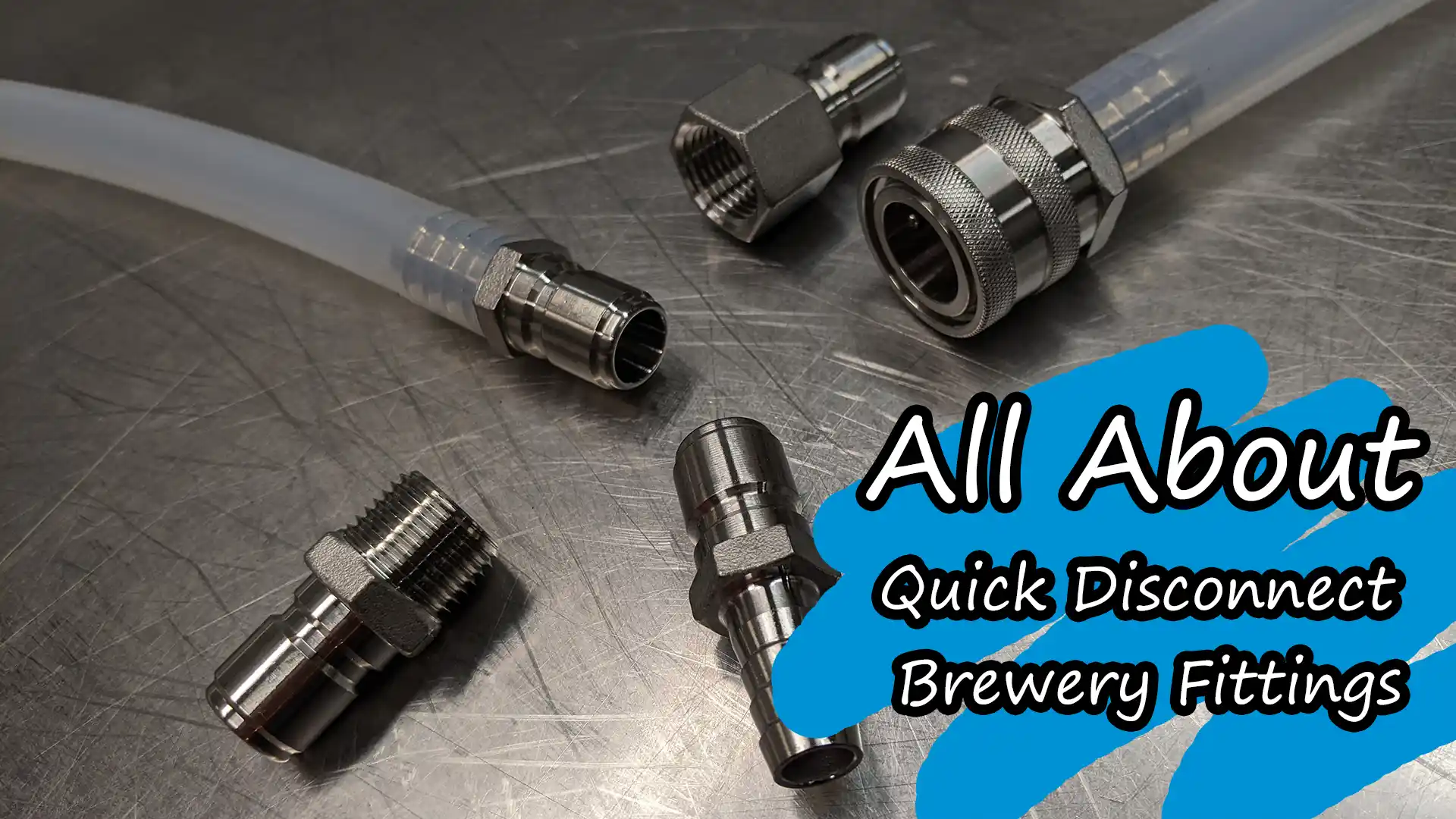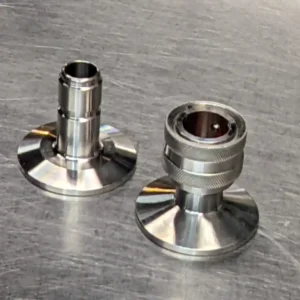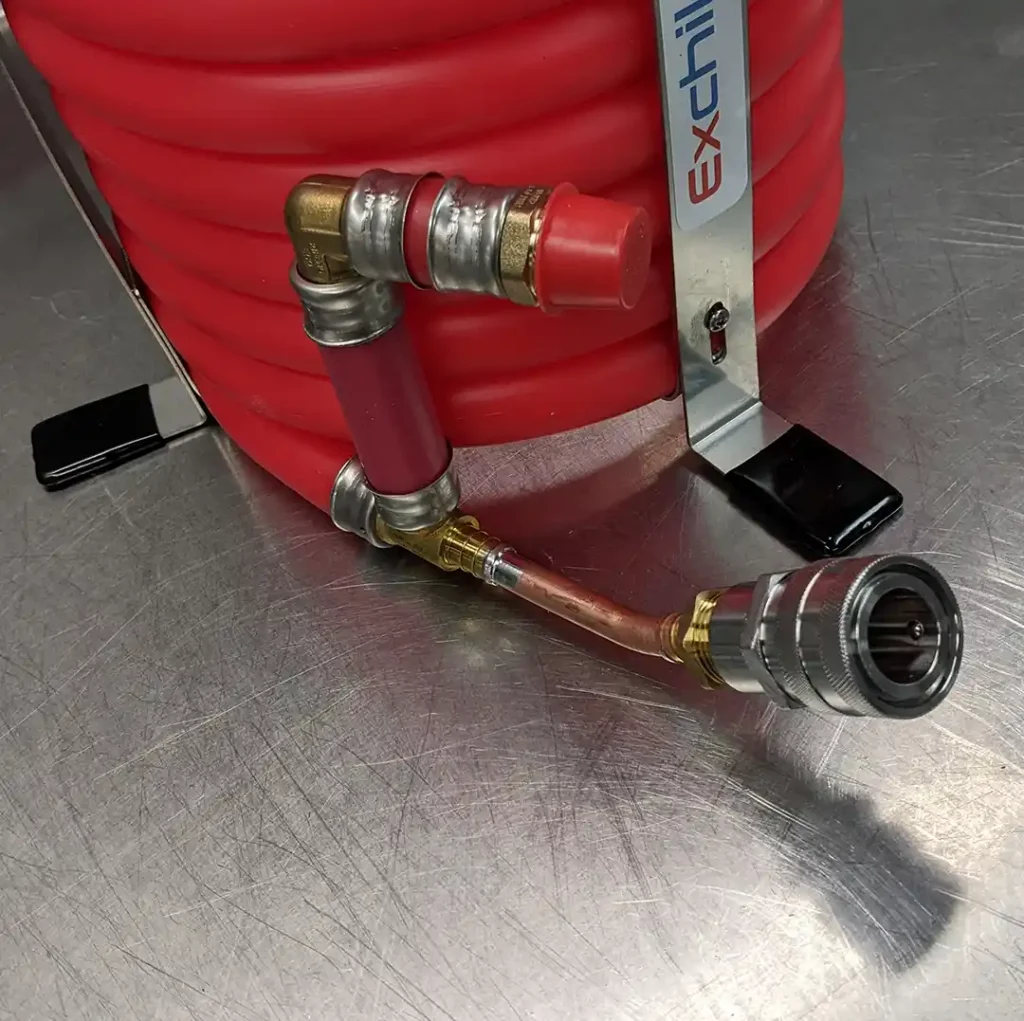
While professional breweries already use them, quick disconnect (QD) fittings are a game-changer for home brewers, embodying simplicity and efficiency during your brew day. These fittings, which allow for the rapid connection and disconnection of liquid lines without tools, have helped streamline the brewing process, making them an indispensable asset and time saver on brew day. This guide aims to be a definitive source for understanding and utilizing QD fittings in brewery, covering their types, applications, benefits, and maintenance.
Introduction to Quick Disconnect Fittings
At their core, Quick Disconnect fittings are designed to simplify the fluid transfer process, enabling swift changes between brewing stages without the hassle of traditional threaded or TC connections. Their design ensures a leak-proof seal that provides peace of mine and ensures safety.
Types of Quick Disconnect Fittings

- Stainless Steel QD Fittings: A cornerstone of brewing applications, these fittings are considered the standard for brewing applications for their durability, resistance to high temperatures, and ease of sanitation. Available in both NPT and TC, they’re suitable for all stages of the brew day and are the preferred choice for most brewers.
- Plastic QD Fittings: Constructed from food-grade polymers, these fittings offer a lightweight and economical alternative for applications not subjected to high temperatures or pressures.
- Push-to-Connect (PTC) Fittings: These user-friendly fittings allow for quick connections by simply pushing the tubing into the fitting.They’re commonly used in low-pressure applications, such as kegging and serving, where speed and convenience are a wonderful thing. If you’ve ever used a John Guest fitting on your home water lines then you probably already know how to use them.
Applications and Benefits
QD fittings find their applications across various stages of brewing:

- Mash Recirculation and Sparging: QD fittings facilitate easy transfer of mash and sparge water between vessels with their simple connecting and disconnecting between kettles and pumps, improving time efficiency and consistency.
- Wort Transfer: They ensure a smooth and secure transfer of wort to fermenters, minimizing exposure to air and potential contaminants due to their quick ability to connect and disconnect from vessels and valves.
- Chilling and Serving: Quick disconnects streamline the chilling process by easily connecting your wort chiller, and also simplify the serving setup, allowing for quick keg changes and easy line cleaning.
The benefits of incorporating QD fittings into your brewing setup are profound:
- Efficiency: Save valuable time on brew day with quick changes and setups.
- Versatility: With a range of fittings available, customize your brewing system to meet specific style or needs.
- Sanitation: Stainless steel and certain plastic QDs are easy to clean and sanitize, reducing the risk of contamination, especially when using TC quick disconnects.
Installation and Configuration Tips
- Hose Configuration: We recommend equipping hoses with female QD ends and attaching male QD ends to equipment. This setup minimizes the risk of handling hot fittings as your fingers will be moving the sleeve on the hose and not the hot kettle! This ensures a more user-friendly and non burning experience!
- Material Choice: Stainless steel is universally recommended for its durability and suitability across all brewing applications. However, plastic and PTC fittings are excellent for specific uses, such as cold-side processes, serving, and glycol lines.
- Tubing Selection: Silicone and reinforced silicone tubing are preferred for their flexibility, temperature resistance, and compatibility with QD fittings, enhancing the overall efficiency and safety of the brewing process.
Cleaning and Maintenance
Maintaining your QD fittings is important for both longevity and performance. Disassemble and clean them regularly with a brewery-approved cleaner, followed by thorough sanitization. Inspect seals and gaskets for wear and replace them as necessary to prevent leaks.
For anyone wanting to learn how to disassemble and clean your quick disconnect fittings, we have created this simple 4 minute video to show you the process in detail.
The Impact of Quick Disconnects in Brewing
Quick Disconnect fittings have streamlined many aspects of the brewing process, offering a more time-efficient and flexible approach to operations. These fittings have simplified tasks for brewers by eliminating the need to screw hoses on with NPT fittings or secure connections with a clamp for TC setups every time there’s a need to transfer, recirculate, or whirlpool. This change represents a practical shift in brewing routines, focusing on saving time and reducing hassle for brewers seeking both quality and convenience.
Final Thoughts
Incorporating Quick Disconnect fittings into your brewing setup is likely to make your brewing process both more enjoyable and efficient. Ideal for both experienced brewers and homebrew enthusiasts, the right QD fittings streamline your brew day by saving time and reducing effort, all while maintaining your beer’s quality. Simple and practical, QD fittings are a smart upgrade for any brewing routine.
